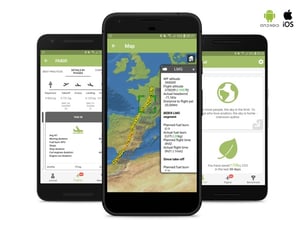4 key factors for a successful fuel program
Starting a fuel efficiency program is a challenging project: from setting up your fuel team to choosing a fuel efficiency tool to better monitor and measure your fuel results; there are many stakeholders to involve and challenges to overcome.
That’s why we wanted to share with you 4 key factors for a successful fuel program, based on other airlines’ experiences that have been there:
-
Excellent data interfaces and data quality management
Exploiting data and turning it into relevant information is probably one of the main challenges when you set up a fuel efficiency program!
Indeed, the biggest barrier to implementing a fuel efficiency program - according to the latest Aircraft IT fuel efficiency survey - is the issue of extracting and processing reliable data. As a matter of fact, 40% of the surveyed people are taking management decisions based on what they themselves describe as ‘unreliable’ data.
When setting up a fuel efficiency program, your ultimate goal is to transform the torrent of raw data that is captured from individual flights into actionable insights to optimize flight operations.
First, you want to automate the integration of all your sources of data (Flight data records, operational flight plans, ACARS, load sheets, weather, etc.) in a single repository. The key word here is “automated”. A hand-made, Do-It-Yourself approach to data collection is riddled with potential pitfalls, including human errors that represent time and financial costs. Moreover, data gathering and cleansing are low-value activities that can be time-consuming.
Do not underestimate the power of data. Some are saying that data is the new oil. As Tim Clark, president of Emirates, said in a recent interview to Business Insider: “Data is key, if you don’t embrace data, you will perish. (…) Every airline is going through a digital transformer, whether they know it or not”.
-
Accurate and reliable computations using SOPs, operating environment
In a domain as demanding as airline operations, true business intelligence requires going beyond coarse statistics alone and relying on more accurate computations. That’s why we recommend that you compute KPIs or other metrics you analyze using performance models, SOPs and considering external factors, such as weather conditions and ATC procedures .
-
Customizable dashboards & reports for all stakeholders
Then you need to analyze your data using efficient and relevant algorithms. Considering the amount of data that is gathered, big data algorithms are necessary to execute reports in a snap on a very large volume of data.
You also need to visualize your data in various ways: interactive reports, graphs, dashboards, maps, 3D animations, etc. Full customization is key since you need to be able to create any kind of reports and dashboards quickly and easily.
And more importantly, it must be easy to share with all stakeholders to facilitate and improve airlines’ decision-making.
-
Pilot engagement module
As pilots are the main actors when it comes to fuel conservation initiatives, the better you engage them, the more efficient your fuel saving plan will be.
We advise you to empower them with an EFB tool, which allows them to review their individual results and briefs them about forthcoming flights. Pilots appreciate particularly features such as 3D flight visualization and a briefing leveraging the experience of all pilots with statistical data crowdsourced from the company’s previous flights.

Figure 1: Example of EFB tool for pilots: MyFuelCoach™
Do you want to go further on these topics? We’re here to help!
READ MORE
Like what you see? Want to learn more about fuel efficiency?
Discover case studies and stories from airlines that have been there:




